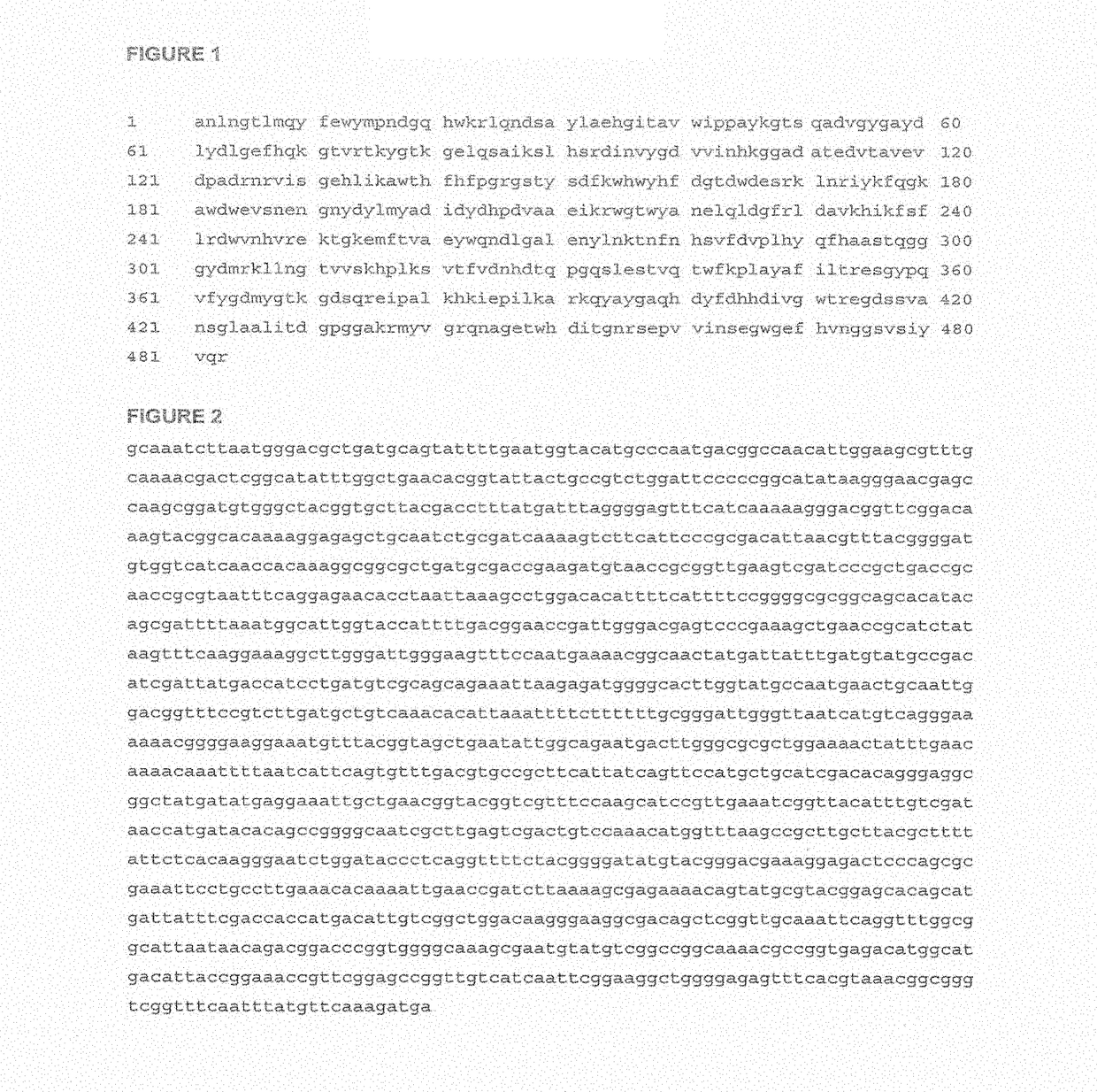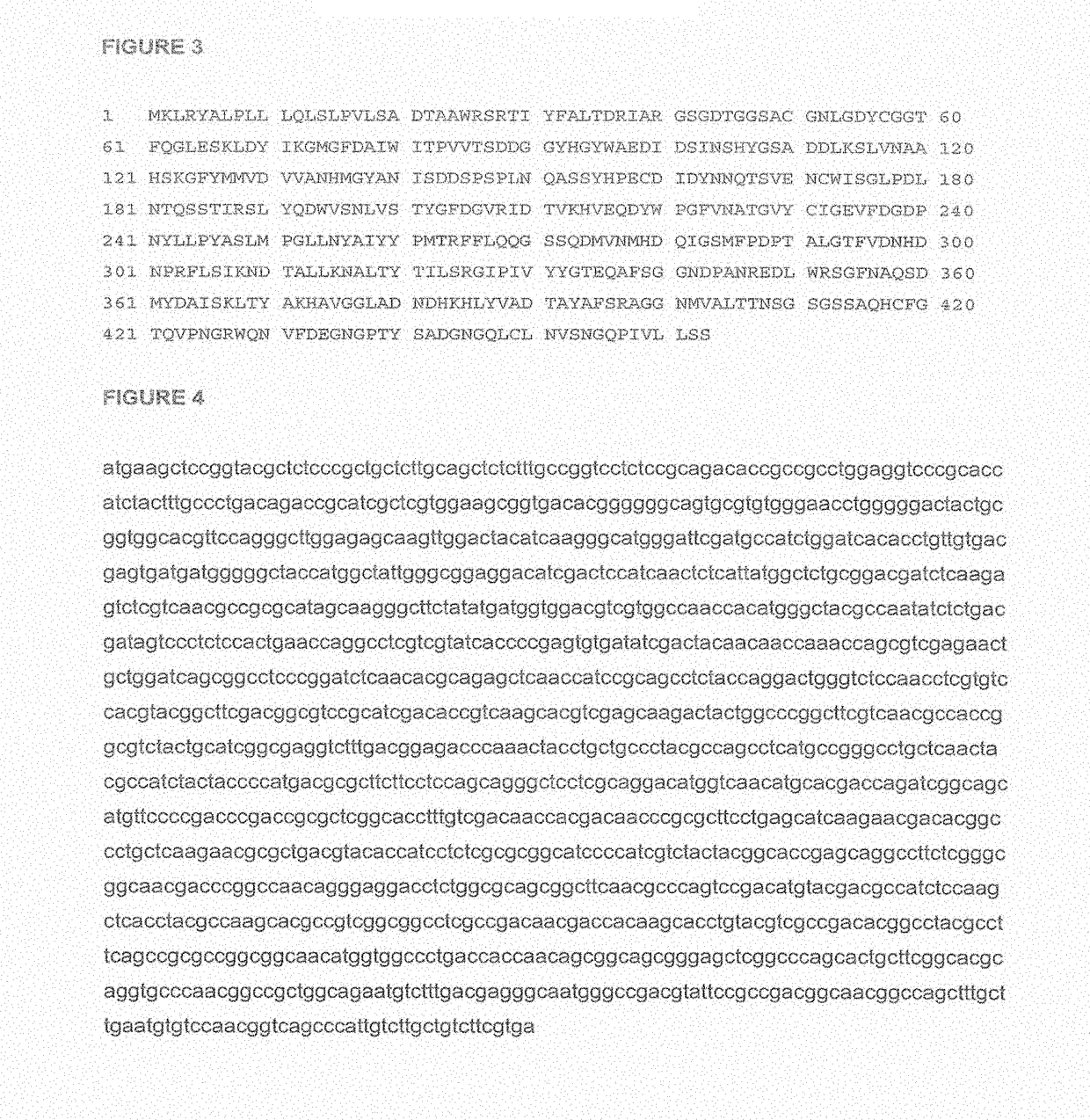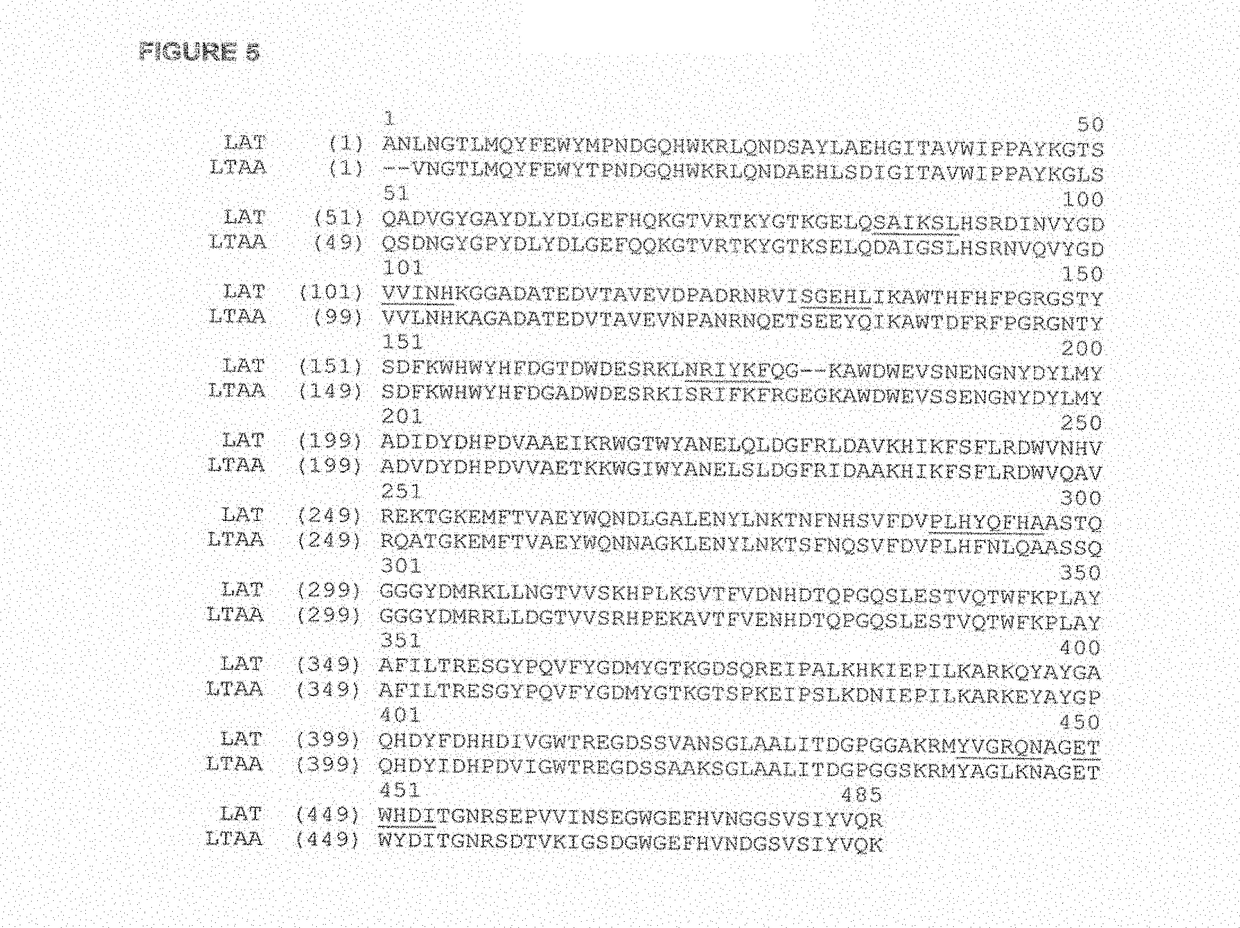Alpha amylases in feed
a technology of alpha amylase and feed, which is applied in the field of pepsin-resistant alpha amylases, can solve the problems of increasing feed efficacy, reducing the production of endogenous alpha amylases, and destroying enzyme activity, so as to improve animal performance and reduce the amount
- Summary
- Abstract
- Description
- Claims
- Application Information
AI Technical Summary
Benefits of technology
Problems solved by technology
Method used
Image
Examples
example 1
[0601]This example was designed to assess the survival of amylases in the digestive system of monogastric animals. In vivo animals excrete amylases which makes it difficult to examine survival of added enzymes. An in vitro test was therefore developed. The conditions in the experimental set-up were designed to mimic the conditions in the Gastro Intestinal Tract (GIT) of monogastric animals. The amylases were tested to see if they were, active after being exposed to these conditions. The α-amylase enzyme LTAA was used as a reference, as this α-amylase was known to improve animal performance in animal trials.
Material and Methods
Buffers:
[0602]Pepsin incubation buffer: 0.1 M Glycine-HCl, pH 3.0, 3 mg / ml BSA, 2.9 mg Sodium chloride anhydrous / mL, 0.73 mg calcium chloride / mL. For solutions with pepsin, the incubation buffer is prepared to contain 25 mg / ml (9250 U / ml) of pepsin (Sigma P-7000) followed by three continuous ten-times dilutions to end up with four solutions containing 25, 2.5, ...
example 2
[0669]This example was designed to compare the performance of two amylases LTAA (a B. amyloliquefaciens alpha amylase presently used in feed) and LAT, the pepsin resistant alpha amylase according to the invention. The purpose was furthermore to test if the evaluation / comparison of the two amylases done in vitro could be validated in animal trials. The LTAA was dosed as recommended from the supplier (Danisco) 2000 U / kg of feed, whereas the LAT was dosed to be equivalent in performance based on laboratory trials, i.e. 100 U / kg feed.
Materials And Methods (Trials 1, 2, 3 and 4)
Performance Trials
[0670]Male broiler (Ross 308) day-old chicks were obtained from a commercial hatchery, weighed and assigned on the basis of body weight to 48 floor pens: six treatments with eight replicate pens. Floor pens were located in environmentally controlled rooms. Each pen was identical in layout, with one bell drinker and one feed hopper per pen. Feed in mash form was provided ad libitum and water was f...
PUM
| Property | Measurement | Unit |
|---|---|---|
| pH | aaaaa | aaaaa |
| pH | aaaaa | aaaaa |
| pH | aaaaa | aaaaa |
Abstract
Description
Claims
Application Information
 Login to View More
Login to View More - R&D
- Intellectual Property
- Life Sciences
- Materials
- Tech Scout
- Unparalleled Data Quality
- Higher Quality Content
- 60% Fewer Hallucinations
Browse by: Latest US Patents, China's latest patents, Technical Efficacy Thesaurus, Application Domain, Technology Topic, Popular Technical Reports.
© 2025 PatSnap. All rights reserved.Legal|Privacy policy|Modern Slavery Act Transparency Statement|Sitemap|About US| Contact US: help@patsnap.com



